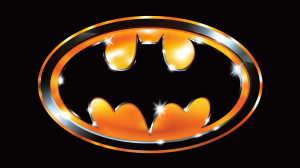
Into the Badlands returns to AMC tonight for its third season. Fans may find the Badlands quite changed from how they remember, and that’s a very good thing.
Videos by ComicBook.com
Into the Badlands was created by Alfred Gough and Miles Millar. The series is set in the neo-feudal society that sprung up some 500 years after our modern society fell during a terrible war. Or, at least it was. After the events of Into the Badlands‘ second season, the society that was built up over our own has itself fallen into disarray.
Of the several barons who had once divided up territory and power in the Badlands, only the upstart revolutionary known as the Widow (Emily Beecham) and Baron Chau, the last holdout of the old order, remain. The power struggle between the Widow and Chau has grown into an all-out civil war that is affecting everyone in the Badlands, but most of all the lowborn cogs who are offered shelter by the Widow only to be quickly trained up as clippers and sent back to the frontline of the war.
This makes the conflict found in season three much more widespread and interesting. The barons were all about backstabbing, intrigue, and battle, but those conflicts were mostly tidy affairs confined to small bands of their own clippers. Seeing the conflict spillover to have a direct effect on the state of the Badlands itself is refreshing, as the constant cycle of alliance-backstab-ally with someone else was wearing thin. Now there is much more at stake than personal power and petty slights.
Meanwhile, Bajie’s (Nick Frost) action in the final scene of season two is manifesting as a “be careful what you wish for” lesson. His use of the Azra book and compass to activate a signal tower did, in fact, draw the attention of someone with knowledge of Azra, but they are likely not who Bajie expected when he thought he was saving the world.
Instead, it is Pilgrim (Babou Ceesay) who finds his way into the Badlands and his version of salvation seems to mean wiping the old order away entirely and replacing it with his own. Ceesay plays the role of demagogue well, and Lorraine Toussaint is even more captivating as Pilgrim’s resident prophet Cressida, mixing just enough confidence and raw spontaneity to make viewers wonder if she is having real visions – a possibility in a world with “dark ones” who have “the gift” – or if she’s just a charlatan making things up on the spot.
The two macro-level storylines recreate a story that has played out across global news feeds for years. A revolution deposes the established, corrupt order, leaving the region an easy target for religious zealots to move in and enact their will. One may assume that this will force the residents of the Badlands to put their differences aside to defend their home, but there’s a serious lingering doubt about whether anyone still believes it is a home worth saving.
As for the rest of the cast, main protagonist Sunny (Daniel Wu) has gone full Lone Wolf and Cub and has been living in solitude for six months mourning Veil and taking care of his son, Henry. When an unexpected turn forces Sunny to make his way back to civilization, or what’s left of it, he catches up with several former allies and enemies before setting off on his new quest. Having a son and losing his love has made Sunny much more sullen and combustible, which is a bit more interesting to watch than the stoic, “I don’t want to fight anybody” Sunny of the previous season.
Other characters have adopted a new demeanor as well. The most growth is seen in Tilda (Ally Ioannides), who has adopted the Robin Hood-like vigilante thief persona of the Iron Rabbit. Ioannides imbues the character with a newfound freedom and confidence that, much like with Wu’s Sunny, is more interesting and entertaining to watch than the morally conflicted Tilda who served the Widow.
The Iron Rabbit is working with the refugee camp run by Lydia (Orla Brady), who is easily the most changed character since the show’s first season, having gone from Baroness to a leader of the downtrodden. Bajie is also back, and Nick Frost is as enjoyable in the role as he was last season, though it’s not clear if the character has learned anything since then. Bajie will likely have a bigger role to play as the season progresses thanks to his connection with Pilgrim.
Finally, there’s MK, who remains the most difficult character to love. Aramis Knight does what he can, but the first two episodes of the season find MK both a prisoner of the Widow and of a newly acquired opium addiction, leaving him with almost literally nowhere to go. There is hope though, as a major revelation in the second episode of the season – which we will not spoil here – seems to set MK on a much more interesting arc than he’s had to date.
Into the Badlands‘ third season is everything fans should expect based on the previous two seasons but with a few unexpected accents. As usual, the fight scenes are glorious, with Sherman Augustus returning as Nathaniel Moon, the brutal formerly retired regent, to make sure that there’s still someone on the battlefield who can challenge Sunny. What’s more impressive is that the second episode actually leans away from its battles to build tension a bit. The episode still has its fair share of conflict to be sure, but there are moments where one expects swords to be drawn that are instead only used to build tension towards the inevitable, a nice bit of restraint that will help carry momentum into the middle of the season. There are also moments of extreme violence that have more ritualistic and less martial arts-based roots.
Dialogue is one thing that hasn’t changed in Into the Badlands. This is still a world where people say things like “After all these years, your destiny is finally at hand” with a straight face. That’s not a criticism. These lines are delivered confidently with the full knowledge that Into the Badlands is inspired by Journey to the West, one of the great classical Chinese novels. This is straight-up, unironic wuxia fantasy with post-apocalyptic trappings and it is not ashamed.
Into the Badlands Season 3 appears to be exactly what fans need. It has enough of the great, familiar elements – martial arts action, exciting worldbuilding – while overturning enough of the status quo to make fresh what had started to become stale, adding up to the show’s strongest start to a season yet.
Welcome back to the Badlands. You’re going to enjoy your stay.
Into the Badlands Season 3 premieres April 22nd at 10 pm ET on AMC.








